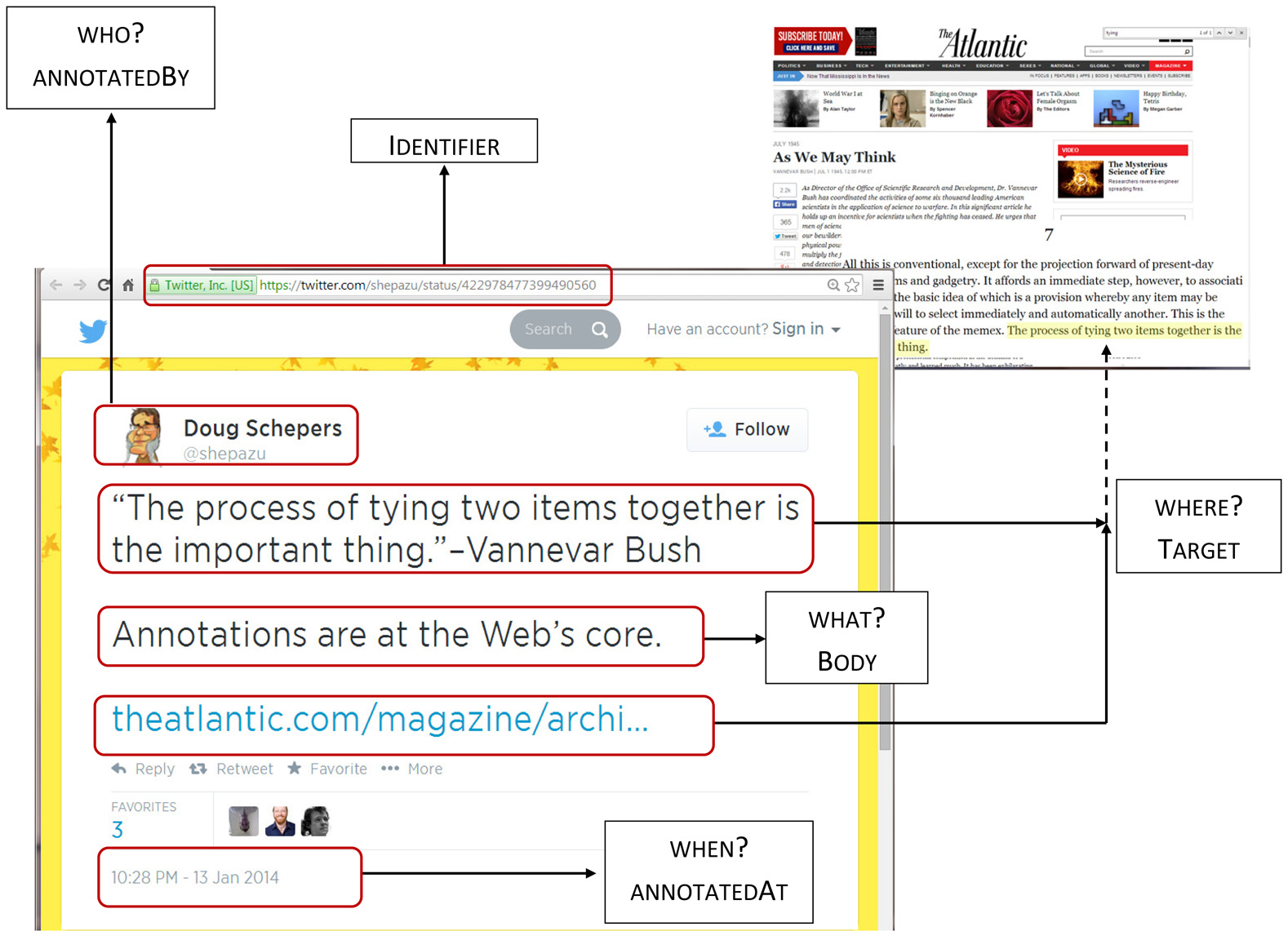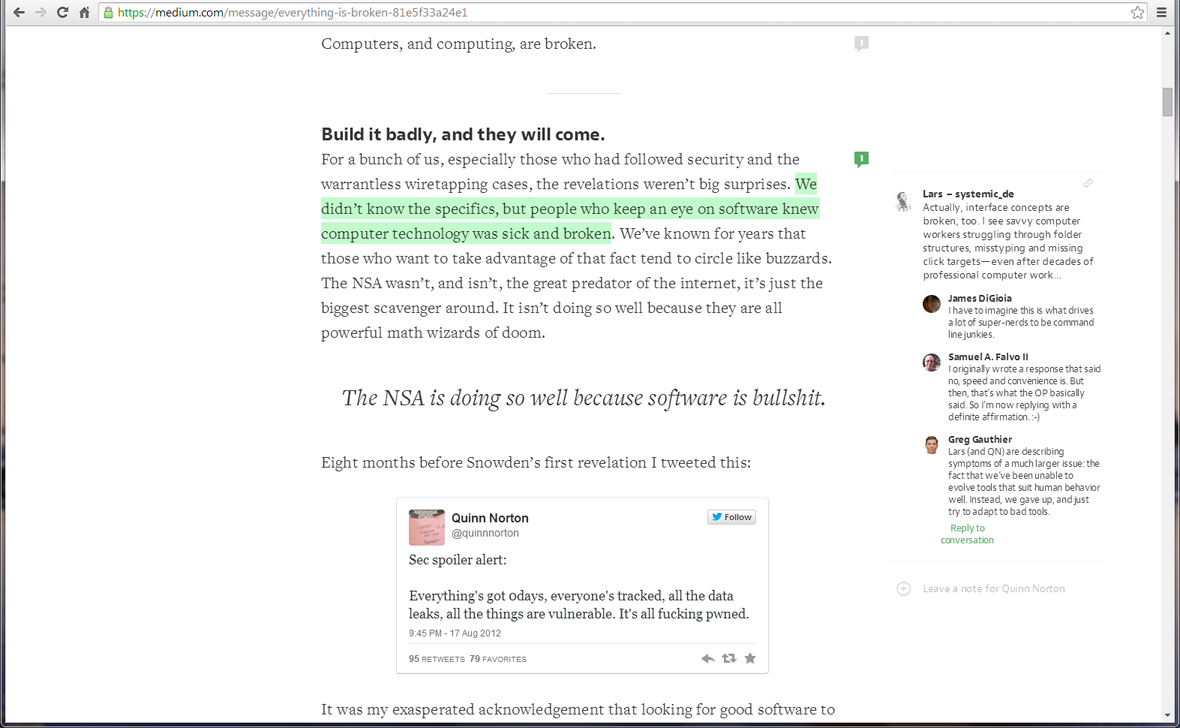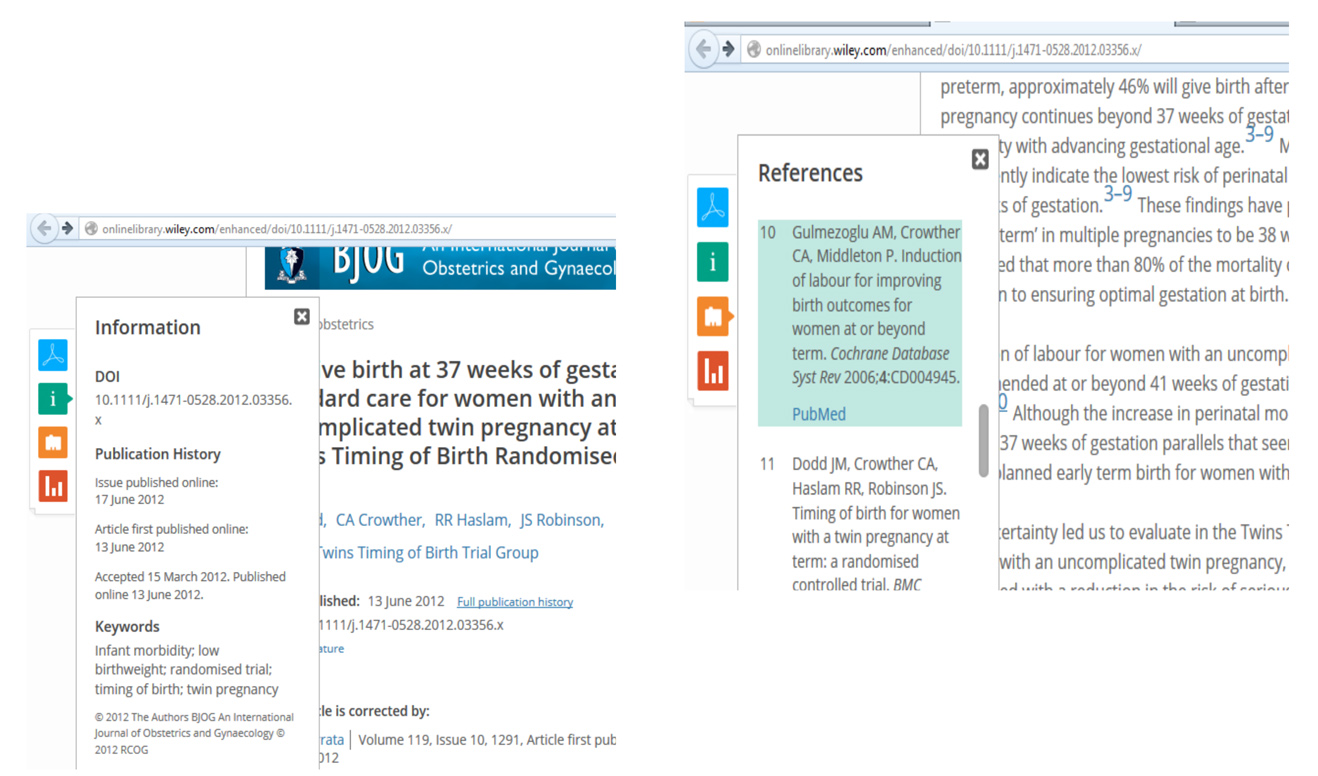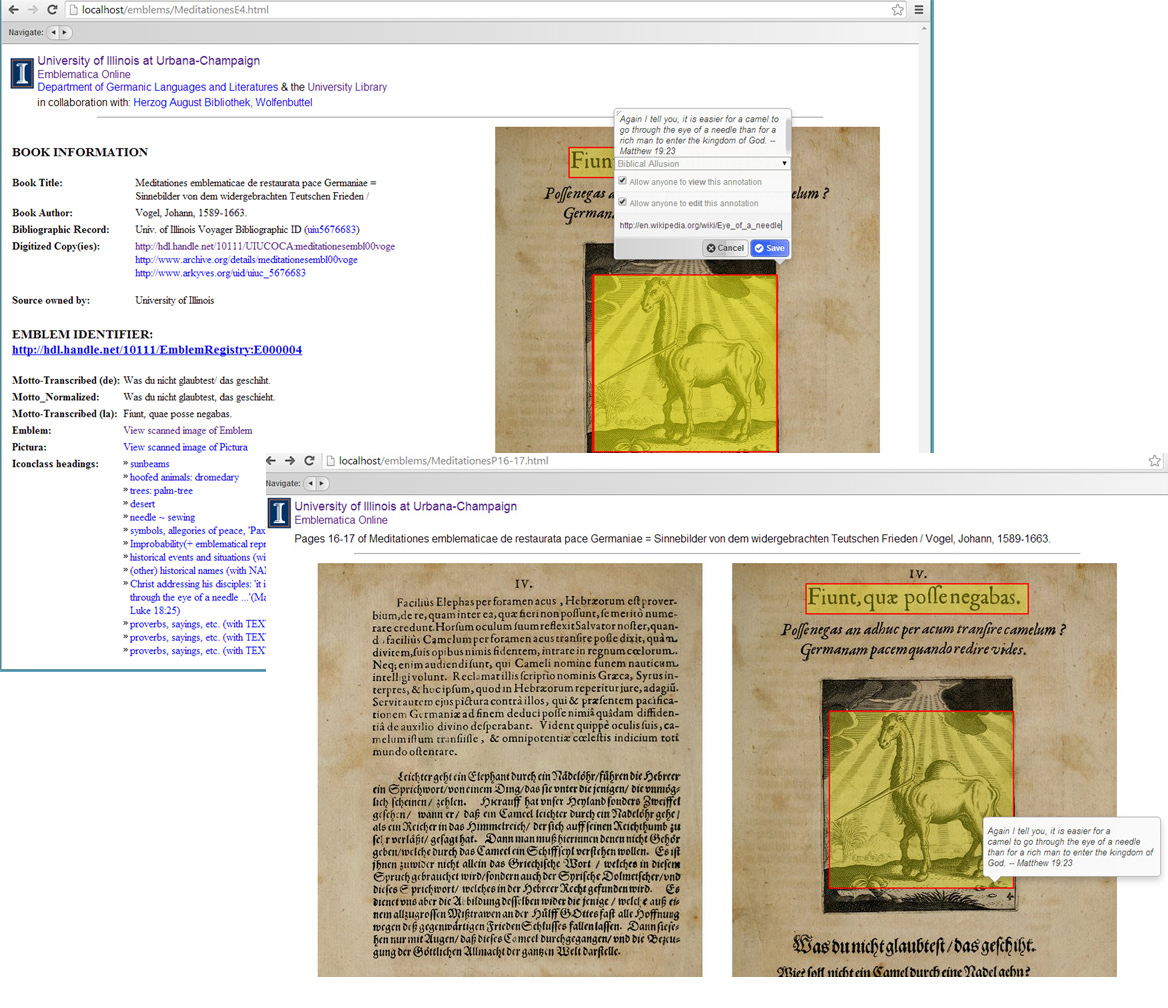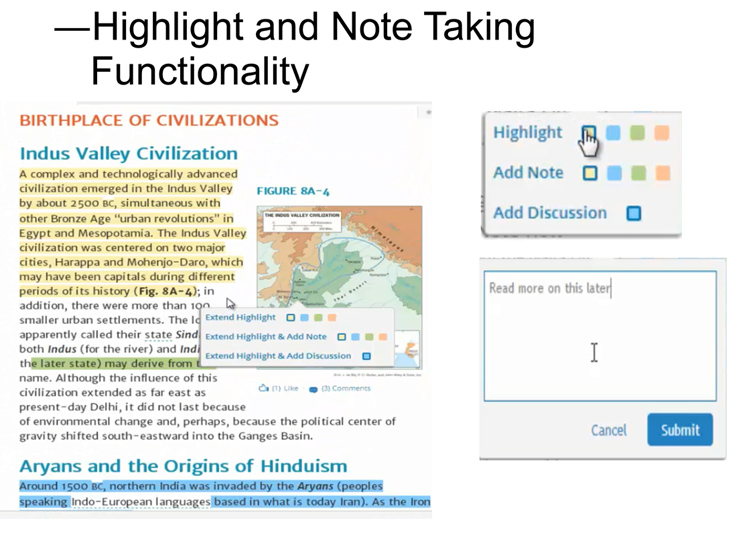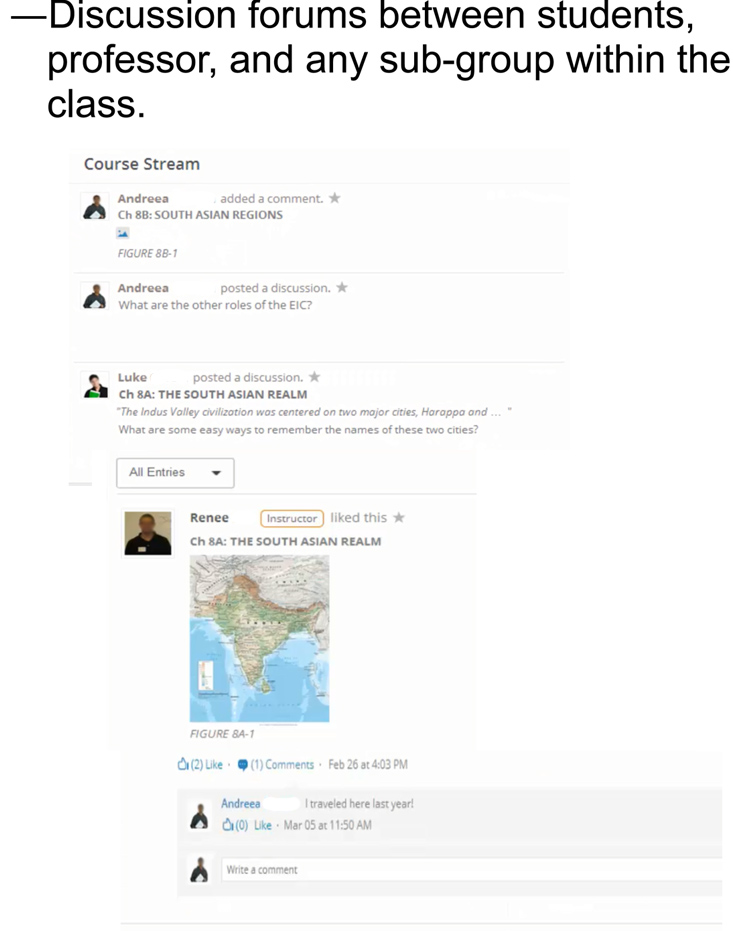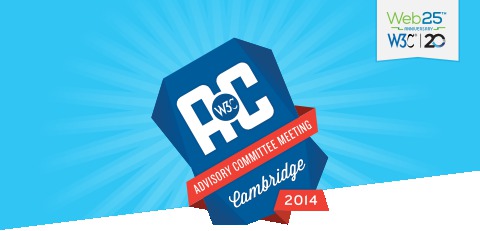
Web Annotations Workshop (April 2014)
Tim Cole <t-cole3@illinois.edu> & Doug Schepers < schepers@w3.org >
June 2014, Cambridge, MA
Context
The practice of annotating has deep roots.
"I have been always solicitous of an ample margin; this not so much through any love of the thing in itself,
however agreeable, as for the facility it affords me of pencilling suggested thoughts, agreements, and differences of opinion, or brief critical
comments in general" -- Poe, Edgar Allan. Marginalia. The
United States Democratic Review 15 (77) [November 1844]: 484-494.
Instances of annotating on the Web are extensive, diverse and increasing in number.
"Annotating is the act of creating associations between distinct pieces of information.
Annotation is a ubiquitous activity online in many guises: comments on articles, footnotes, sticky notes, 'hot spots' on images, timestamped
notes on video or audio tracks, highlighted text passages in ebook readers, evocative pictures attached to song lyrics, quotes and links on
social media, geotagged pinpoints on maps, and even tagged bookmarks, are all forms of annotation." -- W3C.
Web Annotations Workshop Home Page. April 2014.
The Web Annotation Workshop provided a chance to take stock of where we are
and move towards consensus about where we need to go.
Challenge & Motivation
The Challenge -- annotation on the Web currently lacks a structured approach:
- Annotations locked inside content silos, single ebook reader app or individual blog Website.
- Annotations are not readily available for syndication or aggregation.
- No standard for collating annotations by target, author, or privacy/security-level.
- Mechanisms inadequate when anchoring to passage / region of a resource you don't control or that might render differently on different devices.
Annotation happens on the Web today, but idiosyncratically, in silos and with little hope of interoperability.
The Motivation -- annotation functionality is of growing priority for:
- Digital Publishing -- e.g.: scholarly publishers; news & media publishers seeking greater reader engagement
- Online learning / e-learning / education on the Web
- Collaborative document development -- review & editing workflows; collaborative authoring
- Data curation / data mining / data visualization
What enhancements of the Web ecosystem can help us fully realize the potential of annotations?
Anatomy of a Simple Web Annotation
Open Annotation Community Group
Co-Chairs: Rob Sanderson & Paolo Ciccarese
Formed jointly by the Open Annotation Collaboration and the Annotation Ontology Initiative.
Since formation other projects/initiatives have joined and/or consulted with the CG, including:
- EPub4 (NISO/IDPF collaboration on annotation/bookmarks)
- Annotator (Open Knowledge Foundation)
- Linguistic Annotation Framework (ISO TC 37)
- hypothes.is
Goals Achieved:
- Shared vocabulary for describing Web annotations
- A shared semantic model of Web annotations
- A generic approach for describing targets of arbitrary granularity
- JSON-LD and RDF/XML serializations of annotation descriptions
These accomplishments provide a foundation
but there's more to do.
Illustrations -- Annotations as a Discourse Chain
Illustrations -- Annotation of Academic Journal Articles
From James Williamson (John Wiley & Sons), Annotation in a Publishing Context
(Or Thinking Beyond the Annotated Bibliography): slide 9. Presented at The Workshop.
Illustrations -- Annotations that stay with image when reused across Web Pages
From prototype for Emblematica Online (http://emblematica.grainger.illinois.edu/)
Illustrations -- Annotations in Higher Education
From James Williamson (John Wiley & Sons), Annotation in a Publishing Context
(Or Thinking Beyond the Annotated Bibliography): slides 23, 27 & 28. Presented at The Workshop.
Annotation Workshop Outcomes
- Better understanding of use cases
- Better sense of annotation tool developer priorities
- Consensus that an Annotation WG is a needed next step
Potential deliverables of an Annotation WG (if chartered)
- Extending the work of the Open Annotation CG:
- Abstract Data Model
- Vocabulary
- Serializations, including an HTML serialization
- Additional deliverables not addressed by the CG:
- HTTP API for storing, discovering, accessing & managing annotations
- Demonstratable client-side API (interface & events available in browsers, readers and/or plugins)
- In collaboration with the Web Apps WG
- Robust Mechanism for annotation targeting
Annotation Workshop -- More Information
2 April 2014, San Francisco, California (Fort Mason Center)
Resources available online:
Demo (Annotation of Specification Drafts) / Discussion of Next Steps















